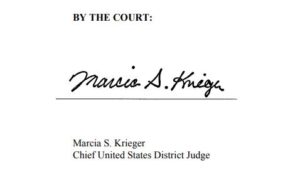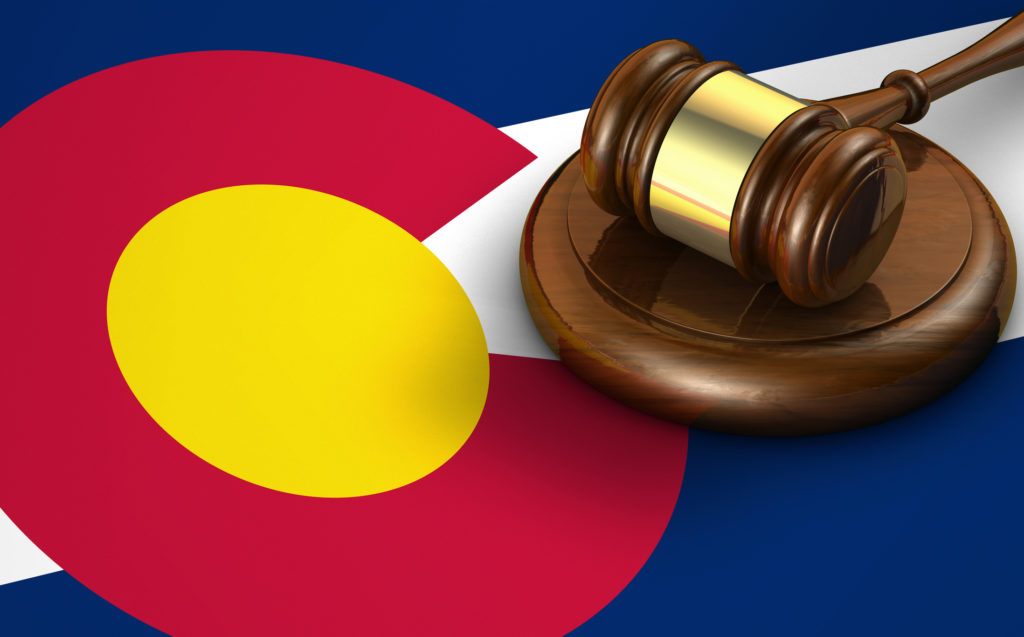“Since the appraisal process is not governed by any formal procedural rules or ethical guidelines, the process is now ripe for abuse, manipulation and outright fraud,” Zelle attorney Steven Badger told Claims Journal.

Colo. District Court vacates umpire’s $3.07M hail award in appraisal fairness case
By onBusiness Practices | Insurance | Legal
A Colorado federal judge this month threw out a more than $3.07 million award to a homeowner’s association after concluding its appraiser and umpire acted improperly and “engaged in conduct that prejudiced the appraisal process and distorted the final award” against American Family.
The July 23 Colorado District Court verdict in Copper Oaks v. American Family involves residential hail damage. But it might carry lessons for auto repairers, insurers and customers who also use the “appraisal clause” process to settle a dispute over the cost of a repair.
The appraisal clause is a common item that “was intended to be an amicable and expeditious approach to resolving disputed insurance claims,” Badger told the insurance trade news site. “Appraisal clauses have been found in insurance policies for over 100 years, with the process serving as a valuable way to bring disputed claims to closure without the need for lawyers or lawsuits.”
The process basically involves both the customer and insurer picking an appraiser, who agree on a third appraiser (the “umpire”). If any two of the three appraisers agree on a dollar value, that’s the amount of the claims payout.
In this case, the Copper Oaks Home Owners Association’s American Family policy stated:
If we and you disagree on the value of the property or the amount of loss, either may make written demand for an appraisal of the loss. In this event, each party will select a competent and impartial appraiser. The two appraisers will select an umpire. If they cannot agree, either may request that selection be made by a judge of a court having jurisdiction. The appraisers will state separately the value of the property and amount of loss. If they fail to agree, they will submit their differences to the umpire. A decision agreed to by any two will be binding. (Emphasis removed.)
The appraisal process can appear in auto policies as well. For example, State Farm auto policy language from nearby Nevada is similar to Copper Oaks’, though it only specifies that appraisers be “competent.”
Hail appraisal
The Copper Oaks HOA said its residential complex had been hit by hail in September 2013. American Family cut a check for nearly $498,000 based on nearly $621,000 worth of damage minus depreciation and deductible.
Copper Oaks property manager Mark Richardson of 4 Seasons Management & Realty had hired Impact Claim Services of Derek O’Driscoll as its public adjuster — agreeing to pay him 15 percent of any insurance payout.
O’Driscoll argued for a supplement, declaring the loss to really be nearly $3.6 million. Copper Oaks agreed, and decided to have 4 Seasons manage the repairs for 2.5 percent of any insurance payout.
“Mr. O’Driscoll advised the Board that this fee could be built into the ultimate claim award,” Colorado Chief District Judge Marcia Krieger wrote in the opinion.
American Family hired Madsen, Kneppers & Associates to get a second opinion, and they concluded the damage was more than $608,000.
A local court agreed with Copper Oaks that the appraisal process should be done, noting that appraisers should “necessarily exclude loss or damage caused solely by a cause other than hail or wind.”
Copper Oaks picked George Keys of Keys Claim Consultants, while American Family picked James Whipple. Keys and Whipple agreed on Robert Norton as the umpire. At Keys’ request, Keys and Whipple also agreed to abide by a Colorado Department of Regulatory Affairs bulletin demanding appraisers be “fair and competent” and umpires be “fair, competent and impartial.”
“It has come to the Division’s attention that disputed claims subject to appraisal are being delayed and insurers, insureds and their representatives, including adjusters and public adjusters, are not communicating in a fair and consistent manner,” DORA wrote. “Furthermore, parties to an appraisal may not be selecting ‘fair, competent and impartial’ umpires.”
The document, which dates back to 2011 and was reissued in 2014 and late 2015, says appraisers can’t have a financial interest in the outcome and must disclose anything a reasonable person would consider a bias. The umpire can’t communicate with an appraiser unless both parties are there, according to DORA.
“At the April 2015 Board meeting, Mr. O’Driscoll introduced and endorsed Mr. Keys and KCC (collectively, “Keys”),” Krieger wrote. “Keys’ presentation and literature espoused views favorable to insurance policyholders and touted success based upon Mr. Keys’ prior experience as an insurance adjuster, which gave him ‘the edge’ in getting the highest claim awards for his clients. He advertised that he treated his clients ‘like he was dealing with his momma.’ Mr. Keys and Mr. O’Driscoll also recommended that the Board retain the law firm of Becker & Poliakoff, P.A, in which Christopher Mammel, Copper Oaks’ current counsel, was a principal. Ultimately, the Board adopted both recommendations.”
Krieger wrote that there was no sign the Copper Oaks board was told O’Driscoll had a referral deal with Keys nor that Mammel and Keys had business and personal ties.
In June 2015, the board approved both the law firm and Keys, agreeing to pay Keys $350/hour plus expenses — “not to exceed 10% of the total of the insurance funds received.”
“In the ensuing months, several judicial opinions in unrelated cases involving the same Policy language i) found that Mr. Keys was not sufficiently ‘impartial,’ ii) disqualified him as an appraiser, and iii) vacated appraisal awards where he had been an appraiser.,” Krieger wrote. “One specifically cited to the percentage fee cap in Keys’ fee agreements as evidence of bias.”
After that last ruling, Keys and Copper Oaks (along with an attorney from the law firm) revised the contract to eliminate the 10 percent fee cap but otherwise left it “functionally the same,” according to Krieger. It was still “devoid of terms common to hourly fee arrangements: specification of who would perform what services at what hourly rate, a provision for submission of periodic statements, provisions for interim payment by Copper Oaks,” she wrote.
The September 2015 contract also contained a “patently false” statement that Copper Oaks had “‘no preexisting financial relationship with KCC,” Krieger noted. (The HOA and appraiser had the earlier deal that was “ostensibly being amended,” she wrote.)
Umpire decision
Keys started the appraisal in January 2016 and submitted it in February 2016. It was more than $1 million higher than O’Driscoll’s estimate.
“Mr. Keys found that every roof, every elevation, every chimney, and virtually all of the siding on every building at the Copper Oaks’ property had either been damaged by hail or, if undamaged, would nevertheless have to be replaced in order to fully repair the hail damage,” Krieger wrote. “His initial loss estimate was $4,968,115.62, which was revised upwards to $5,066,238.99.”
Whipple came in at $406,234.29.
Norton proposed $3,061,201.44. Neither Whipple nor Keys agreed, so he came back with $2,943,919.72 in an email.
“It stated that if not signed, Mr. Norton would be put ‘in a position that I do not wish to be
that may require a very significant shift upwards,'” Krieger wrote.
Whipple took this as a threat, argued that there was no reason why the amount would increase, and attacked “’the one-sided negotiation tactics being employed in an attempt to strong-arm this appraisal to a higher award,'” Krieger wrote.
Norton testified it wasn’t a threat, for that would be “’arbitrary and inappropriate and unprofessional and unacceptable,’” she wrote.
“The Court finds that Mr. Norton’s email warning that if the second proposed award
was not signed then there might be ‘a very significant shift upwards’ was an unambiguous threat to American Family designed to compel Mr. Whipple’s signature,” Krieger wrote. “Contrary to the explanation by Mr. Norton, the risk it injected was not neutral but one-sided. In addition, it was important that Mr. Whipple agree to accept the proposal to insulate it from future challenge.”
Norton then proposed an increased award of $3,073,258.51. Keys agreed to it, locking it in.
Clearly, both men weren’t behaving appropriately, according to both federal and state standards and the DORA bulletin, according to Krieger.
“While there is no direct evidence that Mr. Norton expressly agreed to be bound by the DORA Bulletin with respect to the Copper Oaks matter, there is documentary and testimonial evidence that he was aware of the appraisers’ agreement to abide by the terms of the DORA Bulletin and at the very least did not object to complying with it himself,” Krieger wrote.
Federal rulings, including those from Krieger’s court, automatically disqualify any biased appraiser with a duty to be “impartial” under the policy. Colorado state courts have alternated between the federal standard and a different standard where the appraiser must be biased in violation of the policy and that this bias actually affected the award.
Potential conflicts, DORA violations
Keys never billed Copper Oaks until nearly a year later, one week after the final appraisal award in August 2016. Keys charged Copper Oaks for 666.40 hours of work at $350 for a bill of more than $233,000. Krieger found it noteworthy that despite the elimination of the 10 percent cap, Keys’ bill was “almost precisely that amount,” 9.8 percent of the appraisal award minus the amount already paid.
According to Krieger:
There is no differentiation in hourly rates based on tasks or by the person performing the task – for example, clerical time spent making travel arrangements and Mr. Keys’ presentation of his appraisal to the umpire are both billed at $350 per hour. According to Mr. Keys’ testimony, his staff was supposed to record all time spent on the project, but he acknowledged that neither he nor his staff focused on hourly charges in formulating the single invoice submitted to Copper Oaks. For example, Mr. Keys testified at the hearing that he personally was on site “many, many occasions” in early 2016, yet the invoice Keys submitted to Cooper Oaks bills only three hours of Mr. Keys’ time all in a single site visit. The invoice further reflects that Mr. Keys spent only 7.25 hours in total in preparation of the appraisal, four of which were devoted to emails, communications with the appraisal panel, and a “pro-rated” conversation with counsel. Mr. Keys testified that he did not keep track of his time at all. When asked about billing discrepancies that indicated that Keys may have significantly under-billed Copper Oaks based on hours spent, Mr. Keys was blasé. Neither he nor his staff attempted to reconcile time records with their recollections or testimony. (Emphasis hers.)
Krieger also noted “Copper Oaks’ severely underfinanced reserve account made it impossible for it to pay more than $200,000 to Keys for services rendered unless and until a large appraisal award occurred.” Krieger concluded Copper Oaks and Keys had kept the same deal of 10 percent of the payout, despite that kind of agreement being prohibited.
Keys never told American Family he had been the subject of a variety of court decisions, had at one point a 10 percent contingency deal with Copper Oaks, a referral relationship with O’Donnell and ties to Mammel, Krieger wrote.
His determination “belief that every chimney and every wall (brick and siding) of every building at Copper Oaks had been damaged by hail and required replacement” was also suspect, according to Krieger. (Emphasis hers.)
“In essence, Mr. Keys’ appraisal is that the hail storm in question caused the maximum possible amount of exterior damage possible,” she continued. “Notably, the conclusion that all building walls were damaged was based on the remarkable proposition that the hail storm in question was able to cause impact damage from at least two opposing directions during the same weather event, rather than along a single storm path.”
She called his appraisal “so bereft of methodology and supporting evidence as to be completely implausible” and “fundamentally unfair,” concluding it was probably explained by “Keys’ partiality and material interest in inflating the outcome of the appraisal process.”
Norton also said he had no relationship with any of the parties involved except having been an umpire on a few cases for Whipple and Keys, according to Krieger.
Krieger pointed out that Norton never disclosed the existence of two of the rulings against Keys — nor did he tell the insurer he knew Keys hadn’t disclosed details of one of the rulings either. Norton also didn’t report to American Family he had talked with Keys without Whipple present about one of the rulings against Keys, according to Krieger.
More information:
“Federal Court Ruling Vacates Hail Claim Appraisal Award, Highlights Appraiser Abuses”
Claims Journal, July 25, 2018
Colorado DORA, Oct. 26, 2015
Decision in Copper Oaks v. American Family
Colorado U.S. District Judge Marcia Krieger, July 23, 2018
Images:
Colorado U.S. District Chief Judge Marcia Krieger threw out a more than $3.07 million award to a property owner after concluding their appraiser and umpire had acted improperly and “engaged in conduct that prejudiced the appraisal process and distorted the final award” against American Family. (Provided by U.S. District Court of Colorado)
Federal rulings automatically disqualify any biased appraiser with a duty to be “impartial” under the policy. Colorado state courts have alternated between the federal standard and a different standard where the appraiser must be biased in violation of the policy and that this bias actually affected the award. (NiroDesign/iStock)
The appraisal process in insurance can involve an appraiser for each side, both of which then agree on an “umpire.” (wildpixel/iStock)


